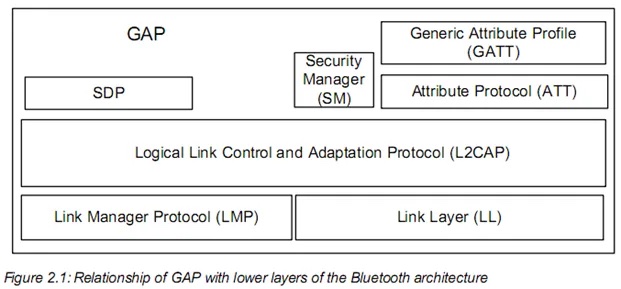
In the intricate world of wireless communication, the Bluetooth Generic Access Profile (Bluetooth GAP) of Bluetooth technology stands as a cornerstone, enabling devices to connect, communicate, and collaborate seamlessly. This article delves into the essence of Bluetooth GAP, its role in establishing connections, and the myriad ways it enhances our digital interactions.
Understanding Bluetooth GAP
Bluetooth GAP is a fundamental part of the Bluetooth Core Specification, which defines how devices discover each other, establish connections, and exchange data. GAP is responsible for device discovery, link management, and security, providing a standardized approach to Bluetooth communication.
The Role of GAP in Bluetooth Communication
GAP plays a pivotal role in the Bluetooth communication process. It manages the initial stages of device interaction, including:
- Device Discovery: GAP allows devices to broadcast their presence, enabling other devices to discover them. This process is known as advertising.
- Connection Establishment: Once a device is discovered, GAP facilitates the creation of a connection between devices, ensuring that they can communicate effectively.
- Link Management: GAP oversees the maintenance of the Bluetooth link, handling tasks such as connection parameter updates and link supervision.
- Security: GAP is integral to the security of Bluetooth connections, managing authentication and encryption to protect data integrity and privacy.
Key Components of Bluetooth GAP
The Bluetooth GAP comprises several key components that enable efficient and secure communication:
- GAP Roles: Devices can operate in various roles, such as the Central role (initiating connections) or the Peripheral role (accepting connections).
- GAP Procedures: These are the processes that GAP uses to manage device interactions, including procedures for device discovery, connection establishment, and link management.
- GAP Attributes: Attributes define the characteristics of a Bluetooth device, such as its name, class of device, and appearance.
Applications of Bluetooth GAP
Bluetooth GAP is the backbone of many wireless applications, including:
- Smart Home Systems: GAP enables devices like smart speakers, thermostats, and lighting systems to connect and work together, creating a cohesive smart home ecosystem.
- Health and Fitness: Wearable devices use GAP for data synchronization, allowing users to track their health and fitness metrics seamlessly.
- Beacons and Proximity Services: Retailers and service providers use GAP to deliver personalized experiences based on a user’s proximity to a beacon.
- Industrial Automation: GAP facilitates the connection of sensors, controllers, and machines, streamlining industrial processes and enhancing efficiency.
The Future of Bluetooth GAP
As technology advances, the capabilities of Bluetooth GAP are expected to expand. With the ongoing development of Bluetooth standards, we can anticipate improvements in connection speed, range, and security, further enhancing the performance of Bluetooth-enabled devices.
Privacy and Security in Bluetooth GAP
Privacy and security are paramount in Bluetooth communication. GAP ensures that devices can securely connect, with features such as secure pairing and data encryption to protect against unauthorized access and eavesdropping.
Conclusion
Bluetooth GAP is the unsung hero of wireless connectivity, quietly working behind the scenes to ensure that our devices can connect and communicate effectively. As we continue to rely on Bluetooth technology for various aspects of our lives, the role of GAP will remain crucial in shaping the future of wireless communication.



